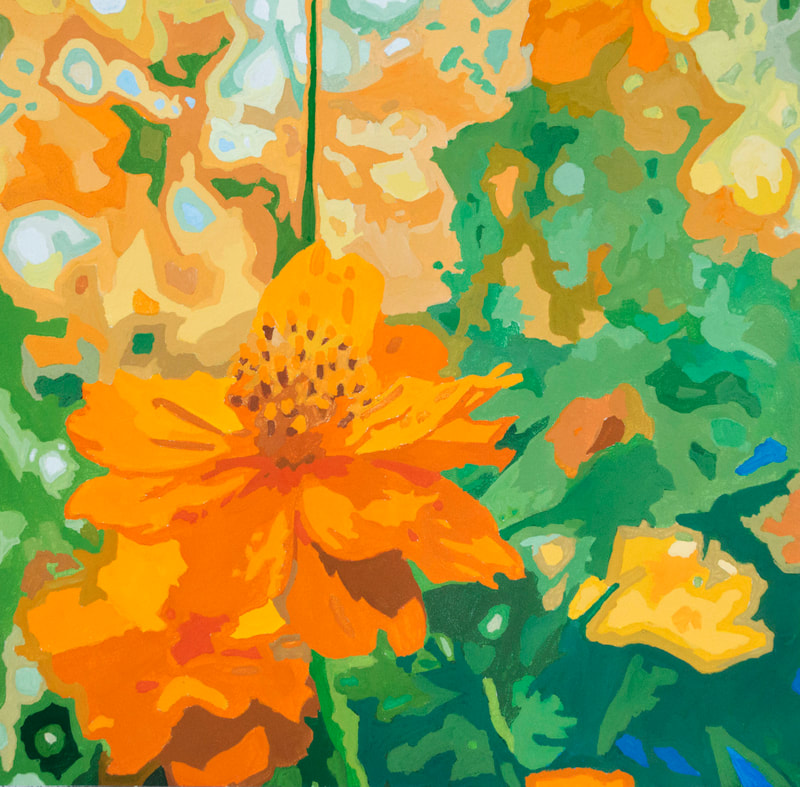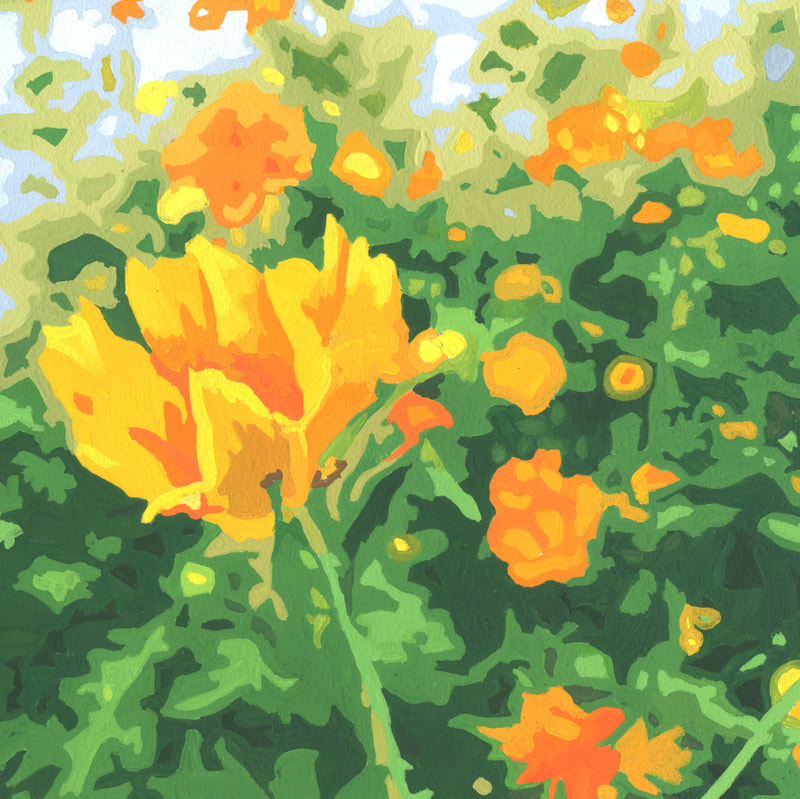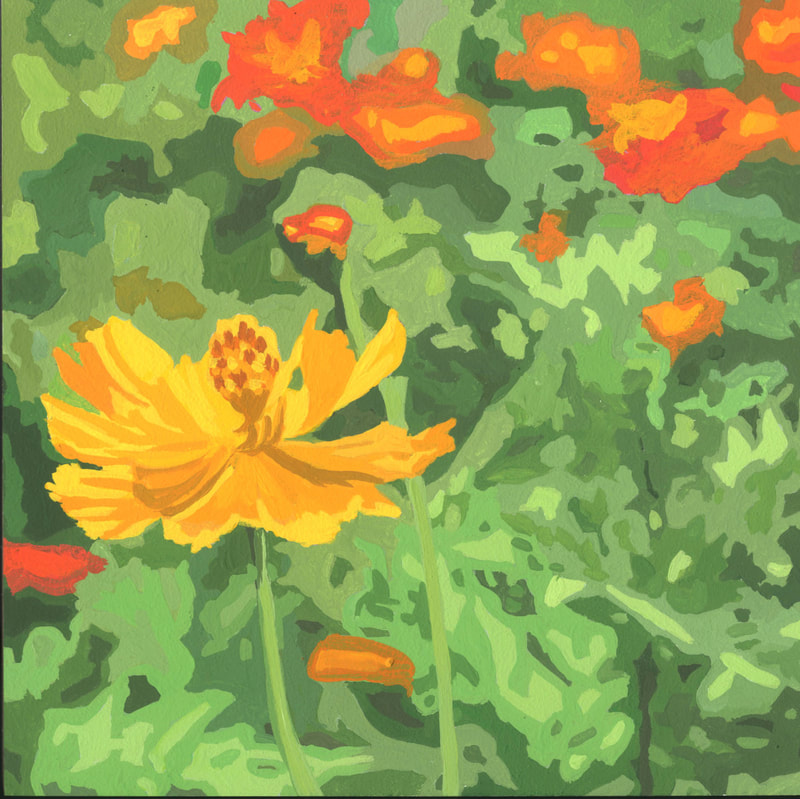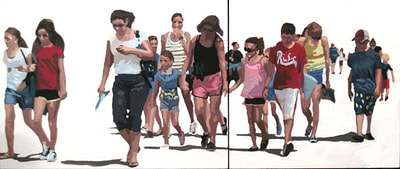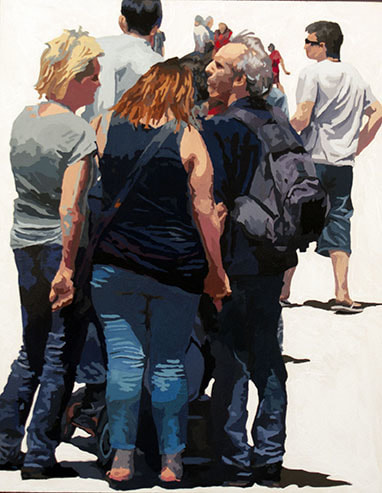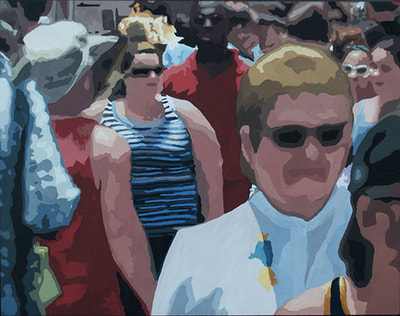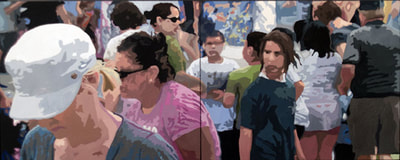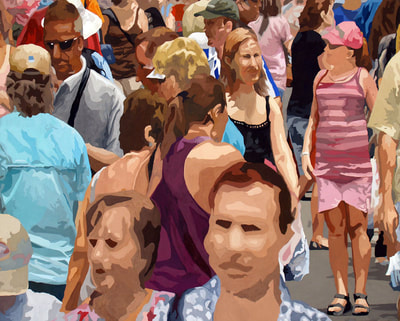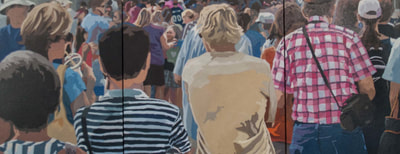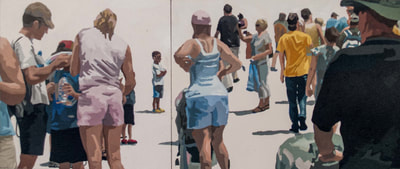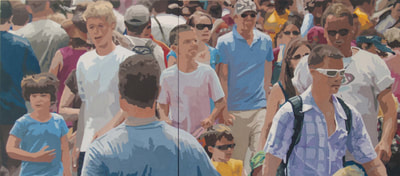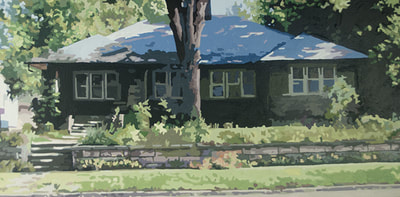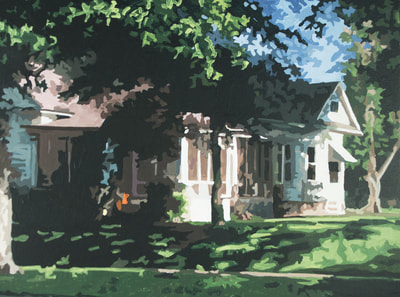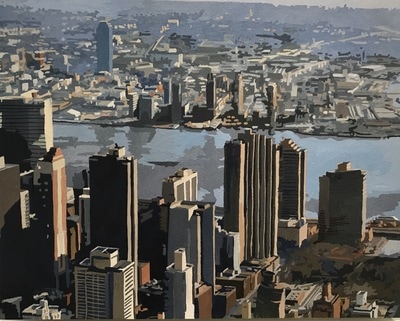James Oliver
ARTIST STATEMENT
In organizing these paintings, I combine aspects from multiple sources-drawings, reference photographs, both personal and others, and memories of events or places where crowds gather. Figure and ground are organized with shape and color, to build a space that can be viewed for both for its sense of simplistic realism and an organic quality of abstraction. Color is drawn from the actual hues visible in observation, and then manipulated to reveal its relationship to the space, ultimately becoming plastic in orientation to build figurative forms within the spaces.
In constructing the imagery, the focus becomes a means for constructing a crowd from multiple sources woven together in composition. In deconstructing the forms to flattened shapes of color the aim is less on the possibility of reality, however real the end product. What happens formally within the painting takes precedent. The issues of composition and color and how they work with and sometimes against one another to either amplify or flatten the space become paramount.
By scaling the work to an a variety of sizes, gaps within the compositions and other more recognizable elements combine into abstracted, yet still identifiable shapes coalescing into forms. The scale, I feel, integrates the viewer as an active participant in the experience of the work. Rather than just viewing the work passively, the viewer is asked to engage in the work both formally and conceptually by filtering the generalized scene through his or her own personal memories of similar events or spaces.
Born in 1972 in Jacksonville, Illinois, James Oliver currently lives and works in Pittsburg, Kansas where he teaches painting, drawing, and color theory at Pittsburg State University. He received his MFA (1997) from Tulane University, New Orleans, Louisiana, an MA (1995) from Eastern Illinois University, Charleston, Illinois, and a BFA (1994) from Denison University, Granville, Ohio.
In constructing the imagery, the focus becomes a means for constructing a crowd from multiple sources woven together in composition. In deconstructing the forms to flattened shapes of color the aim is less on the possibility of reality, however real the end product. What happens formally within the painting takes precedent. The issues of composition and color and how they work with and sometimes against one another to either amplify or flatten the space become paramount.
By scaling the work to an a variety of sizes, gaps within the compositions and other more recognizable elements combine into abstracted, yet still identifiable shapes coalescing into forms. The scale, I feel, integrates the viewer as an active participant in the experience of the work. Rather than just viewing the work passively, the viewer is asked to engage in the work both formally and conceptually by filtering the generalized scene through his or her own personal memories of similar events or spaces.
Born in 1972 in Jacksonville, Illinois, James Oliver currently lives and works in Pittsburg, Kansas where he teaches painting, drawing, and color theory at Pittsburg State University. He received his MFA (1997) from Tulane University, New Orleans, Louisiana, an MA (1995) from Eastern Illinois University, Charleston, Illinois, and a BFA (1994) from Denison University, Granville, Ohio.
|
|

